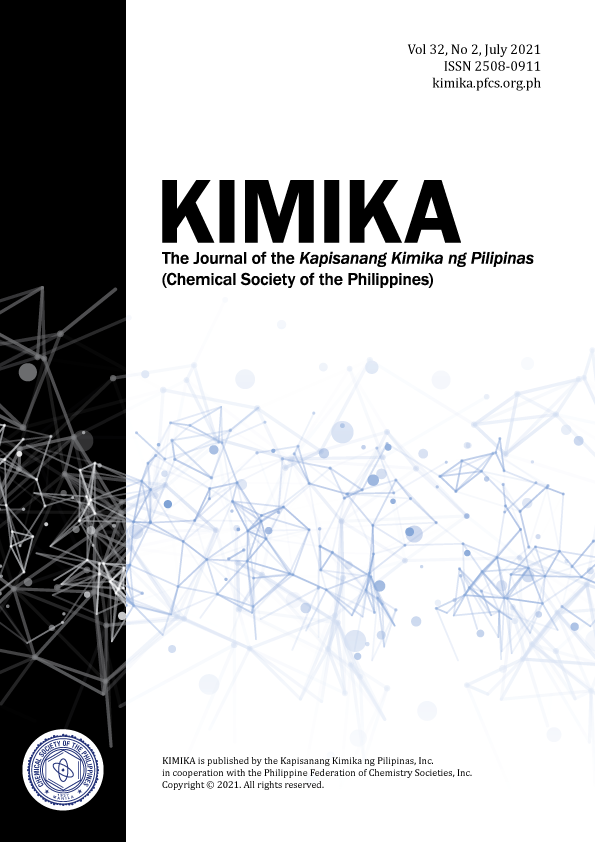Extraction of Milled Wood Lignin from Coffee Husk (Coffea Arabica L.) and the Analysis of Its Potential as a UV-Protective Component of Lotion and Sunscreen
DOI:
https://doi.org/10.26534/kimika.v32i2.1-10Keywords:
Björkman method, Mansur method, Milled wood lignin, sun protection factorAbstract
This study aims to determine the effect of adding milled wood lignin (MWL) to the sun protection factor (SPF) of commercially available lotion and sunscreen. The MWL was isolated from Coffea Arabica L. husks using the Björkman method. FT-IR spectroscopic analysis showed two characteristic peaks located at around 1200 cm-1 and 1300 cm-1, which indicates the presence of guaiacyl and syringyl groups. UV-Vis spectroscopic analysis showed two peaks located at around 278 nm and 325 nm, which indicates the presence of guaiacyl and some conjugated phenolic groups, respectively. The isolated MWL was then added to commercially available sunscreen and lotion at various concentrations. The sun protection factor (SPF) was then determined using the Mansur method and UV-Vis Spectroscopy. Results have shown that from 0% to 40 % by mass of MWL added, there was an observable average increase from 0.90 to 13.86 SPF for lotion, while there was an increase from 26.47 to 34.00 SPF for sunscreen. Results suggest that for lotion the SPF significantly increased if MWL was added from 0% up to 40% while for sunscreen the SPF significantly increased if MWL was added from 0% up to 20%.
Downloads
Published
How to Cite
Issue
Section
License
Authors who publish with this journal agree to the following terms:
- Authors retain copyright and grant the journal right of first publication with the work simultaneously licensed under a Creative Commons Attribution License that allows others to share the work with an acknowledgement of the work's authorship and initial publication in this journal.
- Authors are able to enter into separate, additional contractual arrangements for the non-exclusive distribution of the journal's published version of the work (e.g., post it to an institutional repository or publish it in a book), with an acknowledgement of its initial publication in this journal.
- Authors are permitted and encouraged to post their work online (e.g., in institutional repositories or on their website) prior to and during the submission process, as it can lead to productive exchanges, as well as earlier and greater citation of published work (See The Effect of Open Access).





